A Journey to The High Dam and Lake Nasser’s Hidden Gems
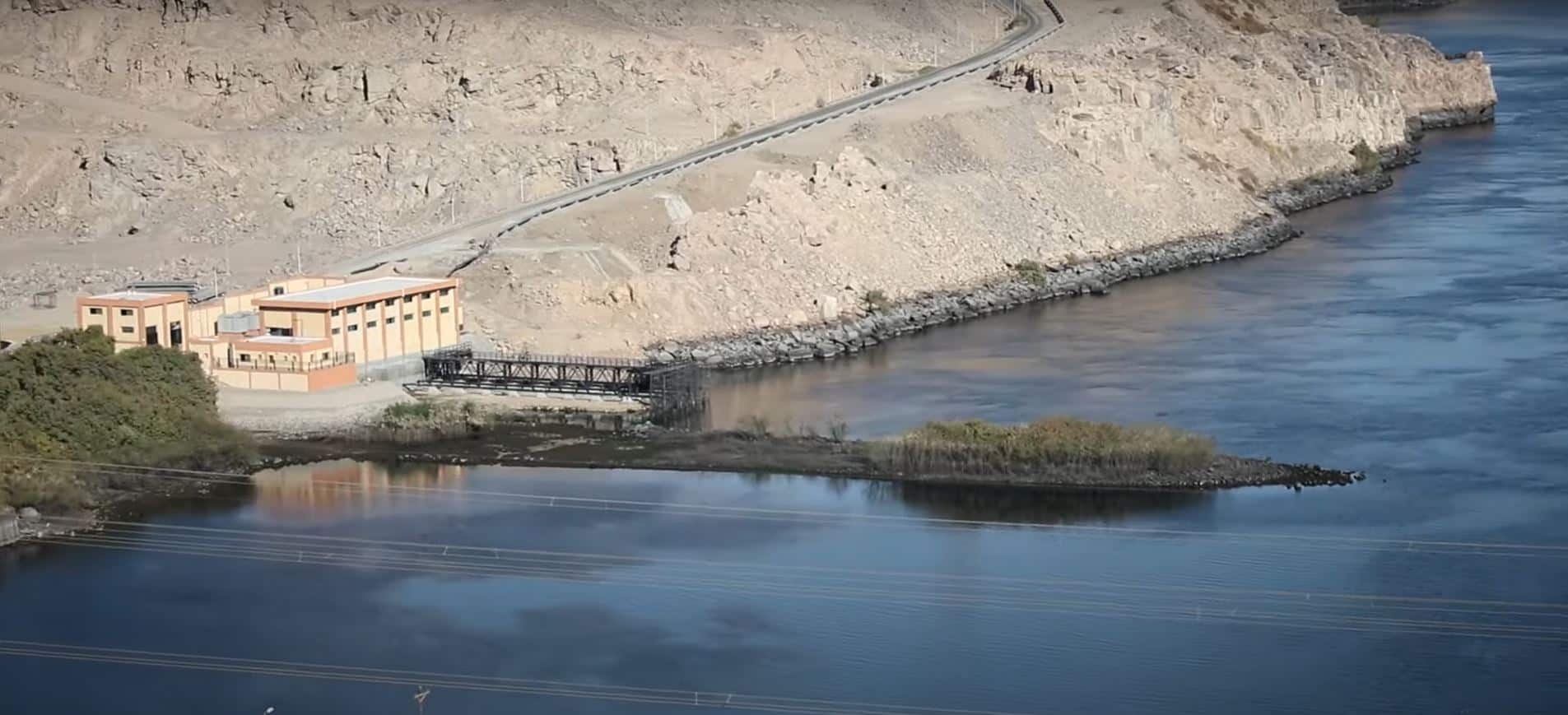
Updated On: April 18, 2024 by Ciaran Connolly
Imagine stepping back into a time when the Nile’s yearly floods were a blessing and a curse to Egypt, bestowing fertile silt for crop growth yet unleashing chaotic destruction.
The Aswan High Dam, an impressive symbol of human ingenuity, was built to master these floods, store precious water for parched periods, and generate a powerhouse of hydroelectric energy, fundamentally reshaping Egypt’s bond with its life-giving river, the Nile.
This ambitious undertaking sparked a revolution in Egypt’s agricultural capabilities and electrification, propelling the nation into a dynamic era of growth and prosperity.
Yet, it also bore the weighty cost of displacing local communities and the painstaking relocation of invaluable ancient relics, serving as a poignant testament to the complex dance between progress and preservation.
As you prepare to visit, anticipate a journey that bridges the ancient and the modern, placing you at the heart of a story where Egypt’s past and present meet.
Getting to the Aswan High Dam
Visiting the Aswan High Dam is a straightforward journey, no matter where you’re starting from in Aswan. The dam is located about 15 kilometres south of Aswan city centre, a relatively short distance that makes it a perfect half-day trip.
If you’re staying in the city, the most convenient way to reach the dam is by taxi, which takes around 20 minutes. Be sure to negotiate the fare beforehand. Alternatively, you could hire a private car or join a guided tour that includes transportation, often coupled with visits to other local sites.
For those on a Nile cruise, your boat will dock at Aswan, and from there, you can easily arrange for a taxi or join a tour of the dam. The journey from the river dock to the dam is slightly shorter, typically around 15 minutes.
Remember to plan your visit during the dam’s opening hours, which are from 9 am to 5 pm daily. This impressive feat of engineering is a sight you won’t want to miss on your trip to Aswan.
Now, let’s delve into some fascinating facts about the High Dam in Egypt.
Did You Know There Was an Old Dam?
Before the mighty High Dam, there was the Old Aswan Dam or the Low Dam, an engineering spectacle of its time, located within the arid beauty of southern Egypt.
Constructed by the British between 1898 and 1902, the Low Dam was built to control the Nile’s annual flooding and store water for irrigation.
What Led to the Construction of The High Dam?
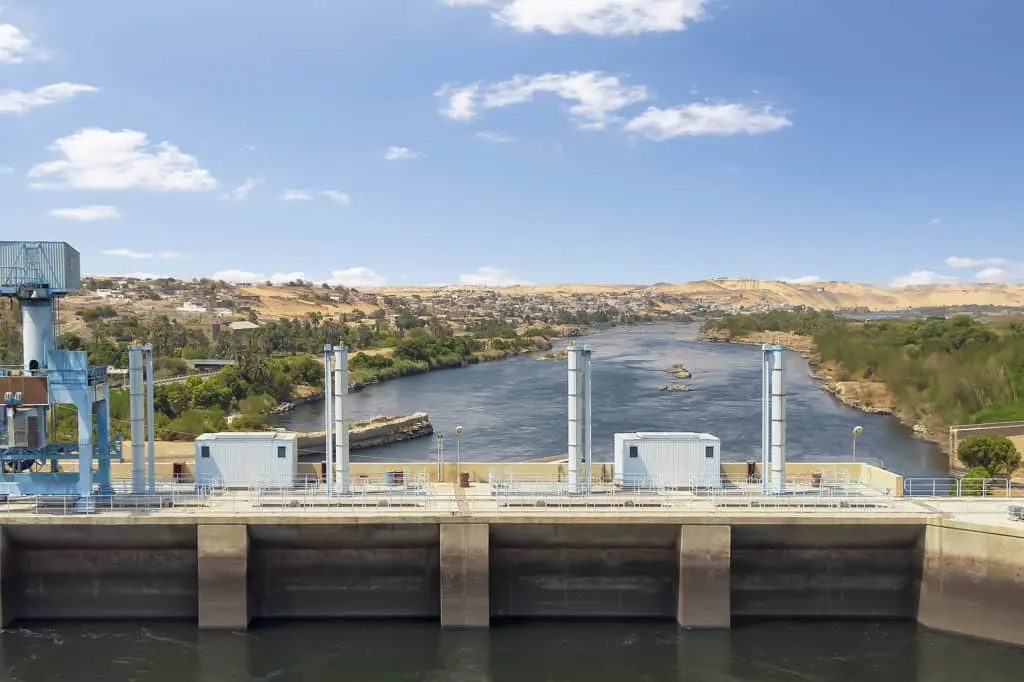
The old dam soon proved insufficient. Its storage capacity was inadequate to contain the floodwaters, and it lacked the ability to generate electricity.
Additionally, the dam’s construction led to increased salinity levels in the Nile Delta, affecting the region’s agricultural yield.
More poignantly, the dam’s repercussions extended to its impact on local communities and invaluable cultural heritage.
The rising waters led to the displacement of Nubian residents and threatened numerous archaeological sites, including the famous Philae Temple and Abu Simbel, which faced submersion under the dam’s reservoir.
These limitations and repercussions eventually led to the decision to construct the High Dam in the 1960s, a colossal project aimed at overcoming the shortcomings of its predecessor and propelling Egypt into a new era of progress and prosperity while also sparking a massive international effort to save and relocate endangered monuments like the Philae Temple.
Building the High Dam
The construction of the High Dam in Aswan was an extraordinary feat of engineering, a project of such scale and significance that it captured the world’s attention.
The project began in 1960, led by the Egyptian government under President Gamal Abdel Nasser, and took a decade to complete. Built primarily by Egyptian labour, the dam was a symbol of national pride and determination.
However, the construction process was far from easy. It required the excavation of 100 million cubic metres of earth and the pouring of nearly 17 times that amount of silt and rock fill, creating a structure 111 metres tall and nearly 4 kilometres long.
International cooperation played a crucial role in this monumental task. When Western funding for the project was withdrawn due to political disagreements, the Soviet Union stepped in, providing crucial financial support and technical expertise.
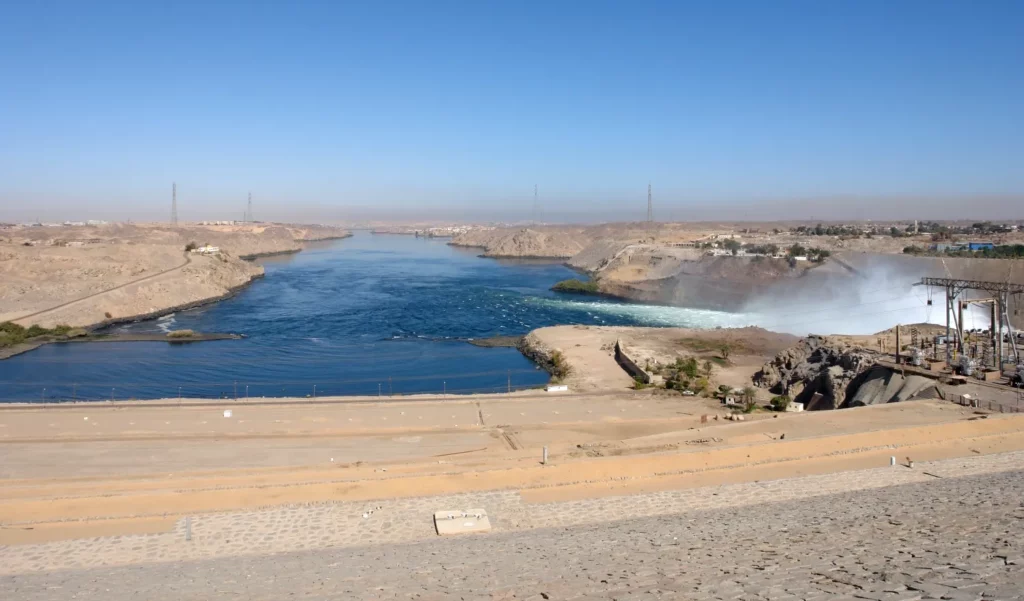
Relocating Monuments
The construction of the High Dam in Aswan came with an urgent challenge: the impending submersion of invaluable ancient monuments, including the Abu Simbel and Philae Temples.
Faced with the potential loss of these treasures, a massive international effort was launched, coordinated by UNESCO.
Over four years, from 1964 to 1968, the Abu Simbel temples were meticulously dismantled into over 2,000 pieces and relocated to a safer location 65 metres higher and 200 metres back from the river.
The Philae Temple underwent a similarly painstaking process. The entire Philae island was surrounded by a cofferdam, and the water inside was pumped out, leaving the temple high and dry. It took 8 strenuous years for the temple to be disassembled and moved to the nearby Agilkia Island, which was carefully landscaped to resemble the original location.
This Herculean effort stands as a testament to global cooperation and humanity’s dedication to preserving its shared cultural heritage.
The Blessings of the High Dam
As you gaze upon Aswan’s High Dam, consider the profound impact this monumental structure has had on Egypt.
On the positive side, the dam has been transformative for the country’s economy and infrastructure. The Aswan High Dam put a decisive stop to the Nile’s destructive flooding, converted over 100,000 acres of arid desert into fertile land for farming, and paved the way for the cultivation of additional crops on approximately 800,000 acres of existing farmland.
Furthermore, by regulating the Nile’s flow, it has ensured a reliable water supply for agriculture. Its hydroelectric power generation capacity, which accounts for a significant portion of Egypt’s electricity, has been critical for the country’s industrial and residential needs.
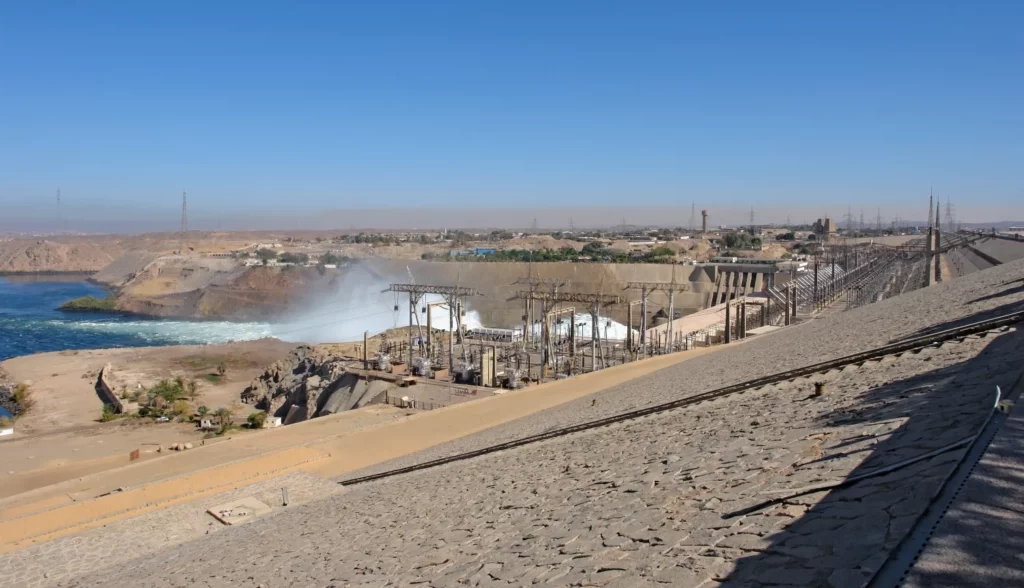
The Unintended Consequences
However, this progress came with its own set of challenges. The dam’s construction necessitated the displacement of over 100,000 Nubian people, a painful upheaval that still resonates today.
Furthermore, the flooding of the Nile Valley to create Lake Nasser threatened numerous ancient monuments, sparking an international race against time to save and relocate these treasures.
Ecologically, the dam has altered the Nile’s natural cycle, affecting riverine habitats and leading to increased soil salinity and decreased fertility in the Nile Delta. It’s also disrupted the migration of certain fish species, impacting local fishing communities.
The High Dam, therefore, stands as a symbol of both human achievement and the complex interplay between development and conservation, a testament to our capacity for great change and a reminder of the profound responsibilities that come with it.
Lake Nasser: A Man-Made Wonder
As you tour the High Dam in Aswan, you’ll be greeted by the vast expanse of Lake Nasser, one of the world’s largest artificial lakes. Created by the damming of the Nile, this impressive body of water stretches over 550 km, reaching northern Sudan.
Lake Nasser plays a vital role in the region, providing water for irrigation, generating hydroelectric power, and serving as a major route for transportation. It’s also an unexpected haven for wildlife.
Despite the harsh desert conditions, the lake is home to a rich array of species, including crocodiles, various migratory birds, and numerous types of fish.
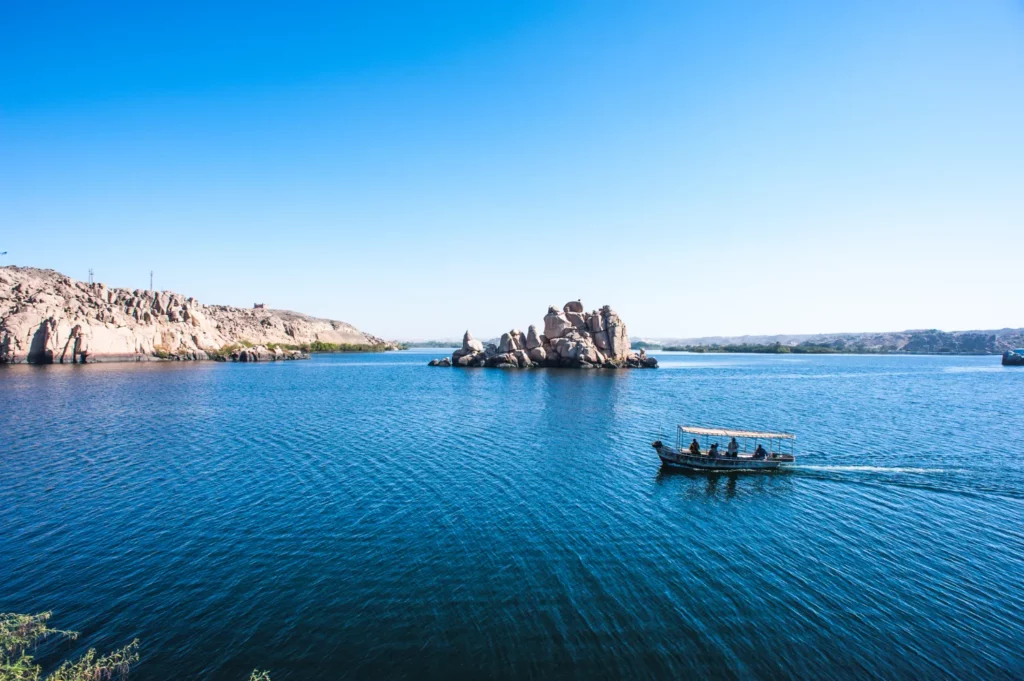
Sailing into the Magnificent Lake Nasser
There’s something truly magical about gliding on the serene waters of Lake Nasser, surrounded by the golden hues of the Nubian desert landscape. The Lake Nasser Cruise isn’t merely a trip; it’s a captivating journey through time that invites you to explore the lesser-known yet equally enchanting chapters of Egypt’s rich history.
Lake Nasser Cruise Itinerary
Your adventure begins in the tranquil city of Aswan, where the cruise ships are stationed. As the ship sails on the tranquil lake, you are entering a world where the grandeur of ancient civilisations echoes in the timeless monuments scattered along the shores.
Cruise prices typically start from $300, scaling up to $800 or more for longer luxury packages. These usually include accommodation, meals, and guided tours, making your journey as seamless as it is memorable.
Although Lake Nasser can be visited year-round, the cooler months from October to April offer the most comfortable sightseeing conditions. As you wander these ancient sites, the mild weather will add to your enjoyment.
The journey typically spans 3 to 5 days, allowing you ample time to experience the archaeological gems hidden in the Lake Nasser region, such as the Abu Simbel Temples, the Kalabsha Temple and the rock temples of Beit El Wali.
Visiting Abu Simbel Temples
The iconic Abu Simbel temples are undeniably the star attraction. These fascinating structures were carved out of a mountain during the reign of Ramesses II as a lasting testament to his power and divine status. The larger temple, dedicated to Ramesses II himself, boasts colossal statues of the pharaoh, while the smaller temple, dedicated to his wife Nefertari, showcases the beauty and grace of ancient Egyptian art.
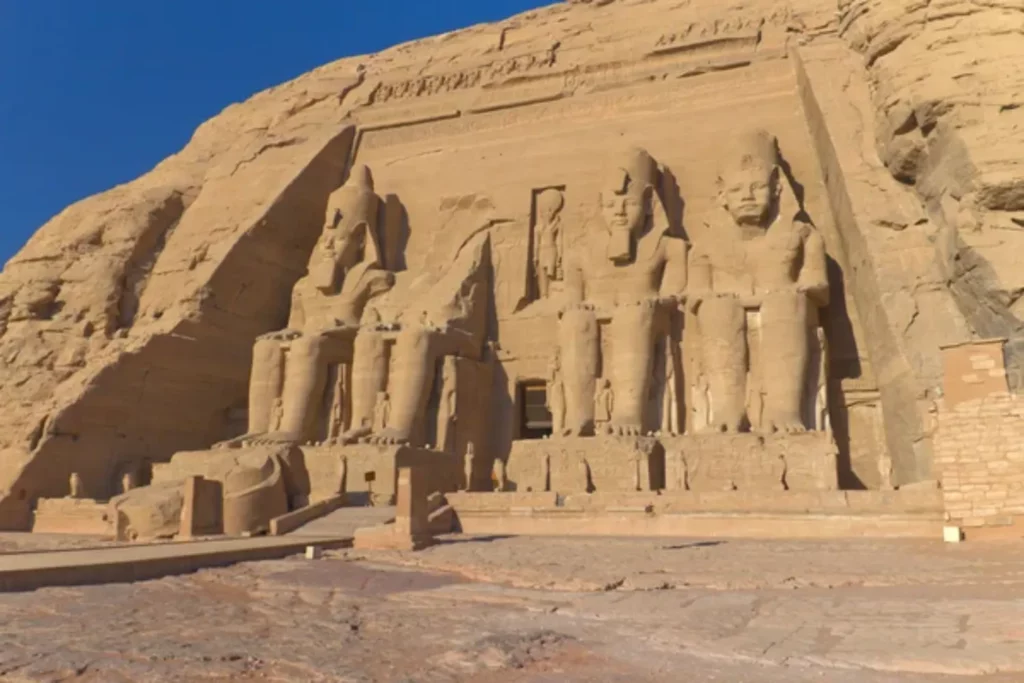
The Roman-built Kalabsha Egypt
One such treasure is the Kalabsha Temple, a captivating testament to Roman-era Egypt. This often-overlooked gem, one of the largest free-standing temples of Nubia, was also relocated for preservation purposes. Intricately carved with scenes depicting Roman emperors alongside Egyptian gods, it highlights the unique cultural fusion of the period.
The Old Beit El Wali Rock Temples
Another must-visit is the rock temples of Beit El Wali, the earliest of Ramesses II’s temples. Its beautifully preserved reliefs provide fascinating insights into ancient Egypt’s military campaigns and religious practices.
The intimate scale of Beit El Wali contrasts with the grandeur of Abu Simbel, offering a more personal glimpse into the world of the ancient Egyptians.
Dining near the High Dam in Aswan
When visiting the Aswan High Dam, you’ll find an array of delightful dining options to suit all budgets. For a taste of traditional Egyptian cuisine at an affordable price, check out “Al Dokka” restaurant in the city centre.
For a more upscale experience, the restaurant at the Sofitel Legend Old Cataract Aswan offers both international and local dishes with a stunning view of the Nile.
If you’re in the mood for a unique cultural experience, “Nubian Dream” offers a homey atmosphere and authentic Nubian food. Don’t miss trying classic Egyptian dishes like Koshary, Foul, and Ta’miya during your visit.
The High Dam’s construction was a turning point in Egypt’s history, a testament to the country’s resilience, and a symbol of mankind’s ability to reshape the environment for its needs. Today, as you stand before this colossal structure, you’re witnessing not just a dam but a chapter of history carved in stone and water.
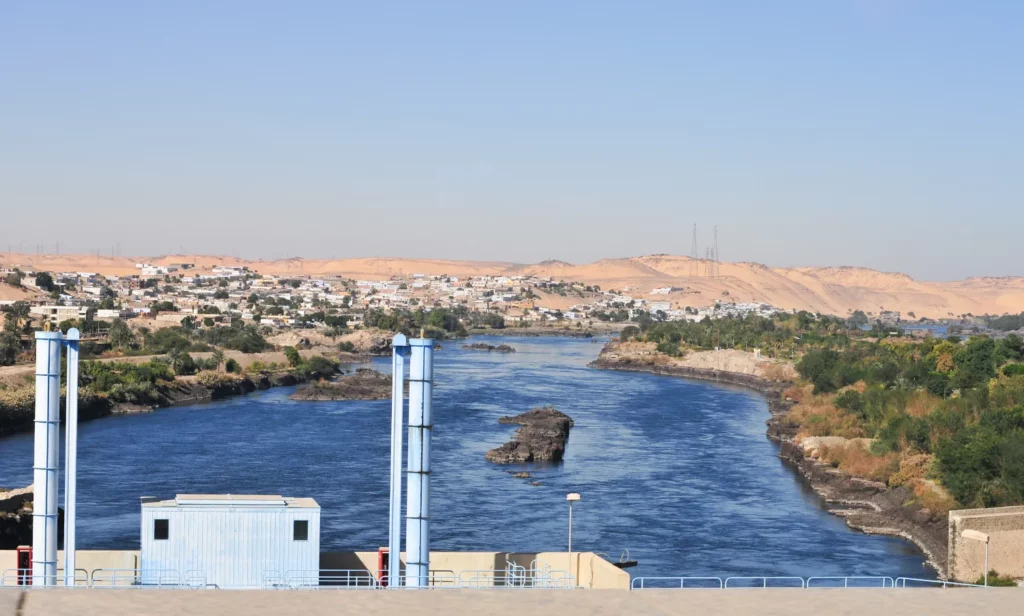
So, as you sketch out your Aswan itinerary, consider reserving a few days for the Lake Nasser Cruise. It’s an experience that blends leisure, learning, and the thrill of discovery in a way few other journeys can. Embark on this voyage, and prepare to be swept away by the timeless allure of Egypt’s hidden treasures.






